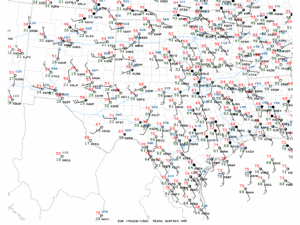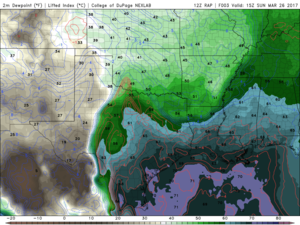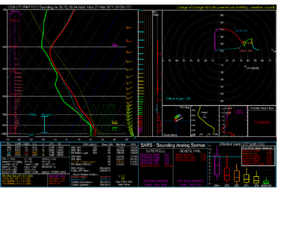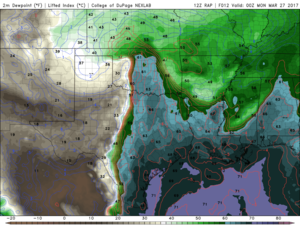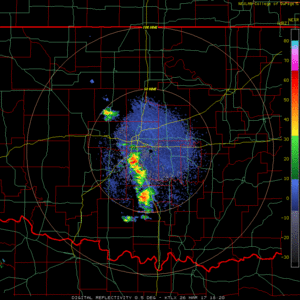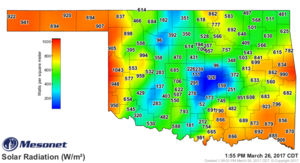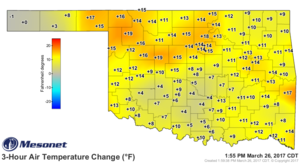Kinematics:
There is a shortwave moving across the southern plains today and tonight.
Tracking the shortwave vort max over the last 24 hours and assuming that it deepens somewhat and follows a similar path of its predecessor, I think we can count on very nice west-southwest flow aloft, which will work together with the low level response from the SE to provide extremely favorable wind fields for dangerous tornadic supercells. The sounding below is for Ardmore, OK at 22Z, which shows a classic loaded gun sounding for discrete supercells..

Red is 00Z assumed:
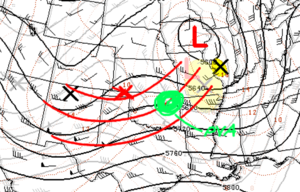
The center of the surface low is a couple mb’s stronger and slightly southwest of where the RAP predicated it at this time…therefore, I believe low level backing may be even better than anticipated as the day progresses and that low tracks ESE across the southern Plains.
Moisture:
Moisture was a concern ever since we started looking at this day. The question of whether or not moisture advection was going to be adequate is becoming clearer.
12Z soundings for CRP show a pretty shallow moisture layer, dropping off quickly at 925mb. We can probably expect that the model forecast is a few degrees above reality, for a variety of reasons. But after performing some hand analysis, I found that it can be reasonably expected to have 55F DPs at the red river by 22Z, and 60F DPs in the Dallas area in that same time frame. This is more than adequate given the other parameters. These numbers are confirmed by SREF. If there was more moisture, this would probably be a high end tornado forecast.
Instability:
The modest low level moisture would typically be a problem for buoyancy, since we would be on a less favorable mixing ratio…BUT this is countered today by a really robust 8.5-9 mid-level lapse rates (and no early convection!) that will span over most of the warm sector. The result: MLCAPE values of 1500-2000 that reaches through southern Oklahoma predicted by a majority of the SREF ensembles.
Lift & Initiation:
According to my 500mb analysis, the greatest PVA will be occurring around E or NE OK this evening…this will not help us much with initiation. There’s not a potent upper level speed max to work with. The cold front will not be surging (thank God). So the dryline will likely be the prime focus for initial ascent. There is some uncertainty between models with regard to the sharpness of the dryline, but all convective allowing models show a necklace of discrete and semi discrete cells forming between the 22 and 24Z time frame, which confirms what the RAP and NAM forecast soundings suggest. Lid strength index shows negative values in the Witchita Falls area first… before overtaking the entire target area shortly after.
Storm Mode:
Due to the wind fields perpendicular to the dryline and the adequate amount of CINH, expect discrete supercells at first, transitioning to semi-discrete and then MCC after sunset due to interactions and lack of robust instability.
If I were chasing today, I would drive to
Bowie, TX and monitor from there. I really wish it were closer to KC, MO.
